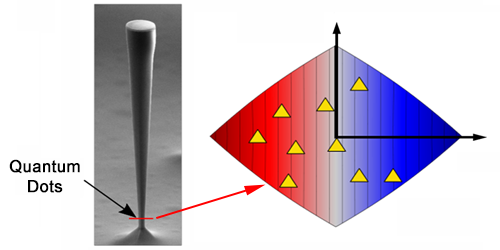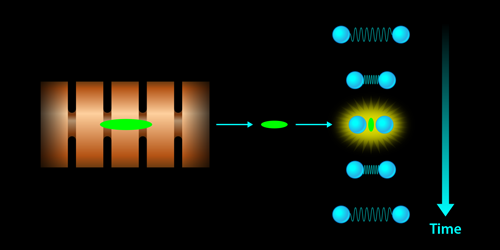Why
is there far more matter than antimatter in the observable universe?
Prelude – above is a strict
physics question but for me, central to my aaqgs-religion for
stoicism (from s) requires you to first draw a map of the terrain
before applying ethics to it. The conflict between stoics (Believers)
and epicureans (atheists) is at least 2000 years old in greece. After
this, I venture forth as agnostic but still needing religion to
answers my doubts in ethics and my future using an epistemology from
science alone, considering traditional inherited, stupid-tome or
irrelevant experience based epistemology subhuman even when their
believers are equal to me, often less-trroubled and ethically
superior to me. It is their belief that are shit and if they shared
my intellectual journeys, they would think like me or better.
I find mysef a member of
family, from a villaage, in a nation on a planet. When I venture out,
I see the moon, Sun and stars. I seek to know about them but I
consider many accounts to be shit. Accounts that do not pass thgrough
my epistemological filters are certainly shit. Even those passing are
considered shit unless they are consistent with many others.
Prestidigitation is assumed if the accounts conflict with no go
theorems. Not much is left after these philosophical filters, but
enough to yield very effective existential nqarrative of life as
social scientific animal that can understand the progression to life
through evolution.
But where did the universe come from? What
happened at big bang time, or do we have to invent the concept of God
who disappeared after big bang? Narrative consistent with agnosticism
and opposed TO ALL Religions but my aaqgs!
But then why did not the matter
and qaantimatter destroy each othe
- In
the first few moments of the Universe, enormous amounts of both
matter and antimatter were created, and then moments later combined
and annihilated generating the energy that drove the expansion of the
Universe. But for some reason, there was an infinitesimal amount more
matter than anti matter. Everything that we see today was that tiny
fraction of matter that remained.
But
why? Why was there more matter than antimatter right after the Big
Bang? Researchers from the University of Melbourne think they might
have an insight.
Just
to give you an idea of the scale of the mystery facing researchers,
here’s Associate Professor Martin Sevior of the University of
Melborne’s School of Physics:
“Our
universe is made up almost completely of matter. While we are
entirely used to this idea, this does not agree with our ideas of how
mass and energy interact. According to these theories there should
not be enough mass to enable the formation of stars and hence life.”
“In
our standard model of particle physics, matter and antimatter are
almost identical. Accordingly as they mix in the early universe they
annihilate one another leaving very little to form stars and
galaxies. The model does not come close to explaining the difference
between matter and antimatter we see in the nature. The imbalance is
a trillion times bigger than the model predicts.”
If
the model predicts that matter and antimatter should have completely
annihilated one another, why is there something, and not nothing?
The
researchers have been using the KEK particle accelerator in Japan to
create special particles called B-mesons. And it’s these particles
which might provide the answer.
Mesons
are particles which are made up of one quark, and one antiquark.
They’re bound together by the strong nuclear force, and orbit one
another, like the Earth and the moon. Because of quantum mechanics,
the quark and antiquark can only orbit each other in very specific
ways depending on the mass of the particles.
A
B-meson is a particularly heavy particle, with more than 5 times the
mass of a proton, due almost entirely to the mass of the B-quark. And
it’s these B-mesons which require the most powerful particle
accelerators to generate them.
In
the KEK accelerator, the researchers were able to create both regular
matter B-mesons and anti-B-mesons, and watch how they decayed.
“We
looked at how the B-mesons decay as opposed to how the anti-B-mesons
decay. What we find is that there are small differences in these
processes. While most of our measurements confirm predictions of the
Standard Model of Particle Physics, this new result appears to be in
disagreement.
In
the first few moments of the Universe, the anti-B-mesons might have
decayed differently than their regular matter counterparts. By the
time all the annihilations were complete, there was still enough
matter left over to give us all the stars, planets and galaxies we
see today.
After
decay of anti-matters still they were active in the universe against
matter and new particles in combination would be generated when both
collide to get mutual destruction. However mesons are particles with
negligible mass and they act .
In
the first few moments of the Universe enormous amount of both matter
and antimatter? What was before the Universe? These particles must
have come to be how? Before the big bang, what was there and where
did it come from? This also beg the question when does time begins?
Is the Big Bang just a period in time?
what
was before the big bang is still a BIG question for physicist...
Many
of yours questions are still questions....so it is the region of
theory which was based on assumption.
I
believe ASSUMPTION is what blurs the lines between Science,
Filosophy, and Theology. But such are the facts. There is nothing we
can do but assume. Therefore the tug of war between science and
religion will forever exist. For who is to say who is right?





